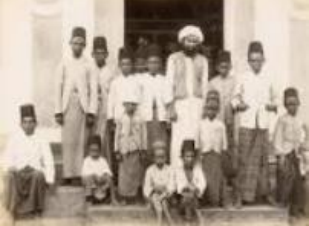The Afghans of Sri Lanka – By Randika Jayakody & Jerome Perera
Source : Brisbane Sri Lankan Newsletter – Dæhæna – September 2022
 Sri Lanka and Afghanistan share a deep history and connection through a little known ethnic group called the Ceylonese Afghans. The Ceylonese Afghans trace their ancestry to the regions of modern day Afghanistan and Central Asia. The community is part of the larger Pashtun ethnic group making up a significant population in
Sri Lanka and Afghanistan share a deep history and connection through a little known ethnic group called the Ceylonese Afghans. The Ceylonese Afghans trace their ancestry to the regions of modern day Afghanistan and Central Asia. The community is part of the larger Pashtun ethnic group making up a significant population in
modern day Pakistan and Afghanistan. Also known as Pathans, the Ceylonese Afghans were recorded in Ceylon’s first census in British Ceylon. Known as Kabul Manushiyan and Afghan Manushiyan in Ceylonese and Moor Tamil, Afghan Karayo in Sinhalese, Orang Bengali in Sri Lankan Malay indicates that their presence was known to all communities.
Ceylon Afghans arrived as horse breeders and keepers, labourers, elephant keepers, and mercenaries from as early at the 1st century. However, they continued to immigrate to Ceylon throughout its history.
As Sunni Muslims, Ceylonese Afghans have contributed to the erection of mosques including the iconic Red
Mosque on Castle Hill Street in Colombo. A little known fact is that many of Sri Lanka’s railroads were also constructed using Ceylonese Afghan labour. Transport across old Ceylon was a domain within which they featured prominently as coachmen connecting various communities.
Afghans also played an important role in Australia with many significant communities being established through the skilful camel caravans of Afghan Cameleers. One such Cameleer and national Australian icon is Gool Mahomet, a fascinating character who worked in Central Australia and established the Adelaide Mosque. Gool Mahomet began his career as a cameleer in Ceylon before migrating to Australia in the late 18th century. Gool Mahomet’s story is reflective of the modern story of many migrants. Our ancestors converged from around the world onto the paradisiacal islands of Ceylon, before lamentably leaving once more to seek security in another country.
Severely affected by post-independence nationalism, many Ceylonese Afghans were deported from Ceylon as they were deemed noncitizens despite living on the islands for centuries. The Citizenship and Repatriation Act deemed individuals unable to prove their father’s birth in Ceylon or their status as third generation descendants to be ineligible for citizenship. At a time during which birth registration was uncommon, this led to the mass deportation of Afghans along with many other communities from Sri Lanka. Ceylonese Afghans continue to contribute in the present. A prominent Ceylonese Afghan is Kareem Zameer, a medical and political historian and presenter of “Lost and Forgotten”. Kareem has been significantly involved in documenting the history and diversity of ethnic groups in Sri Lanka and has authored several books on the subject including “Afghans of Sri Lanka, an Untold Story”.
Let’s end with a beautiful quote from Kareem Zameer himself: “Nevertheless, we haven’t forgotten our roots; we still love our Kabuli Palao, kebabs, mantus, yoghurt, almonds, dried fruits, nuts, Bonjan, Masteh, etc. and our Pashto mores have survived to this day. Just like our Afghan brethren, we too believe in sainthood and Sufism. Despite the checkered history, I am very proud of my Afghan, Indian and Malay roots, but I am through and through Sri Lankan”.
 Randika Jayakody & Jerome Perera
Randika Jayakody & Jerome Perera
Among Randika and Jerome’s many interests is
a deep passion to understand Sri Lankan history and culture.







